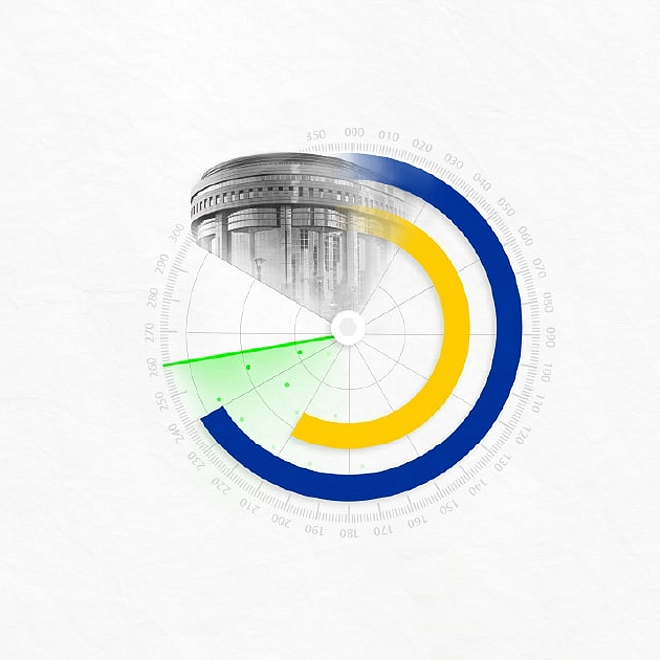Japan economic outlook, July 2022
Pent-up demand and return of tourism hold promise for the economy. Inflation and weakening global economy, however, could interrupt recovery.
Japan’s economy started the year with another contraction in real GDP as the pandemic and external environment continued to thwart recovery. As restrictions ease and economic activity normalizes, pent-up demand should support growth in the near term. However, relatively high inflation and weakening global growth are expected to restrain economic activity over the medium term.
Trade imbalance takes a bite out of growth
Japan’s real GDP fell an annualized –0.5% in Q1 as the trade balance plunged deeper into deficit.1 As a result, net exports subtracted 1.7 percentage points from growth.2 The deterioration in the trade balance came in part from exceptionally strong imports, which in nominal terms were 32.3% higher than a year earlier.3 Successful vaccination campaigns have contributed to this large jump in imports. Indeed, medical product imports more than doubled on a year-ago basis in February. Since then, pent-up demand has kept import growth running strong even as growth in medical product imports has begun to subside and higher food and energy prices are eroding purchasing power.
While import growth surged, the export side of the trade balance equation could have been stronger. Nominal exports were up a more modest 15.3% year over year in Q1 (figure 1).4 Export growth would have been considerably higher if demand from China, Japan’s top export market, had not begun to wane.5 By May, exports to China were slightly lower compared to a year earlier.6 Pandemic-related lockdowns and a struggling property sector have contributed to China’s weaker demand for Japanese exports. Fortunately, exports to other economies and regions, including the United States, the EU, and ASEAN, have held up much better.7

Moving forward, the easing of lockdown restrictions in China is likely to revive demand for Japanese goods. Plus, a relatively weak yen should improve the attractiveness of Japanese exports. However, economic growth is slowing quickly in the United States and Europe, putting the partners of Japanese exporters in these regions at risk of recession, a scenario that could weigh on Japanese exports just as they are about to strengthen. The net export position may also improve thanks to a potential rebound in services exports as borders reopen. Japan had only 147,000 foreign visitors in May, which is far shy of the nearly 3 million visitors in July of 2019.8 This suggests there is plenty of upside for Japanese tourism exports, which could help boost GDP growth in subsequent quarters.
Inflationary pressures begin to build
While the United States and much of Europe grapple with headline inflation running above 8%, the Consumer Price Index (CPI) in Japan was up merely 2.5% year over year in April.9 Although this reading is above the Bank of Japan’s (BoJ) 2% inflation target, it is far more restrained than the inflation seen in many other parts of the world. Food and energy price growth has been notable, as the global price of these commodities surged due to Russia’s invasion of Ukraine, but other components of inflation have been more subdued. For example, after excluding fresh food and energy, Japan’s CPI was up just 0.8% from a year earlier.10
In the near term, inflation could strengthen. Now that pandemic-related restrictions have been lifted, consumer spending will likely rebound. Pent-up demand could make that rebound particularly strong and push prices higher. In addition, the reopening of Japan’s borders could add foreign demand to price pressures. Indeed, even before the relaxation of border restrictions, culture and recreation prices, including hotel charges, were picking up. Supply-side factors will also promote stronger price growth. For example, mobile phone charges were still 22.5% below their year-ago level11 after a policy change last year (figure 2). The base effect for those prices should disappear by October, removing one of the strongest downside components to inflation. In addition, any escalation of the conflict in Ukraine could create another jump in food and energy prices. Meanwhile, weakness in the yen is pushing up import prices.

Over the medium term, inflation is likely to subside again. Energy prices are expected to come down somewhat by next year, which will help alleviate one key source of inflation. However, the energy price outlook remains highly uncertain given that it hinges upon what happens in Ukraine. In addition, aggregate demand growth will likely ease by the end of the year as pent-up consumer spending subsides. Consumers will feel additional constraints as inflation outstrips wage growth. For example, wages were up just 1.7% from a year earlier in April,12 while consumer prices grew by 2.5%. Inflation-adjusted family spending improved on a month-to-month basis this year, but it remains below its year-ago level.13 Strong household balance sheets may offset some of the decline in inflation-adjusted wages, but demand drivers of inflation will likely weaken as savings erode further.
Central bankers hold tight
After years of undershooting inflation targets while keeping interest rates at or below zero, central banks of developed economies have embarked on tighter monetary policy to rein in accelerating inflation. By contrast, the BoJ has left its monetary policy unchanged. Despite inflation climbing above the central bank’s 2% target and the yen losing about 20% of its value over the last year (figure 3), the BoJ has kept short-term rates below zero and capped the yield for 10-year government bonds at 0.25%.14 The more dovish approach to the BoJ’s monetary policy stance largely reflects the facts that real GDP remains 3.4% below its prepandemic peak and consumer prices after excluding food and energy are up less than 1%. Real GDP in other developed economies has reached new heights while inflation has been notably stronger even after excluding the effects of food and energy.

Although inflation is expected to remain relatively contained in Japan, there could still be a modest change in central bank policy if the yen continues to depreciate. For example, should markets anticipate an even faster pace of rate hikes in the United States, the yen could sink further. The BoJ is unlikely to move short-term rates out of negative territory, but longer-term interest rates may be allowed to inch up. The central bank could adjust its yield curve control policy to allow longer-term rates to rise slightly, which should prevent further yen depreciation against the US dollar. Supporting the yen with higher long-term yields runs the risk of weakening credit markets and stifling growth while economic recovery remains incomplete. The other option is to use foreign exchange reserves to bid up the value of the yen. However, this tactic seems unlikely as the stock of reserves could be depleted before achieving the desired exchange rate.
New fiscal priorities could boost growth over the longer term
Real government consumption and investment has trended lower since Q4 2020. In Q1 this year, it stood 1.5% lower than a year earlier.15 However, shifting political priorities could boost government spending in the longer run. The ruling Liberal Democratic Party (LDP) is campaigning on raising Japan’s defense capabilities, including acquiring counterstrike capabilities. This is a notable shift away from the current policy and has drawn criticism for potentially running afoul of the pacifist constitution.16 Under the LDP plan, defense spending could rise to 2% of GDP, up from about 1%. Such a change would likely take place over the next five years and require additional funds to be made available. Notably, the current budget has set aside US$40.2 billion for defense, but according to the LDP policy chief, that number may need to be nearly doubled.17 Stronger government spending absent a tax hike or spending cut elsewhere would provide a sizable tailwind to Japan’s economic recovery.
In sum, Japan’s economic recovery is likely strengthening as pent-up demand pushes consumer spending higher. However, inflation is outstripping wage gains, raising the risk that the rise in consumer spending may be short lived. The trade balance is also likely to improve as tourism returns and China comes out of lockdowns. Unfortunately, a weakening global economy likely presents a serious risk to external demand.
Deloitte Global Economist Network
The Deloitte Global Economist Network is a diverse group of economists that produce relevant, interesting and thought-provoking content for external and internal audiences. The Network’s industry and economics expertise allows us to bring sophisticated analysis to complex industry-based questions. Publications range from in-depth reports and thought leadership examining critical issues to executive briefs aimed at keeping Deloitte’s top management and partners abreast of topical issues.



